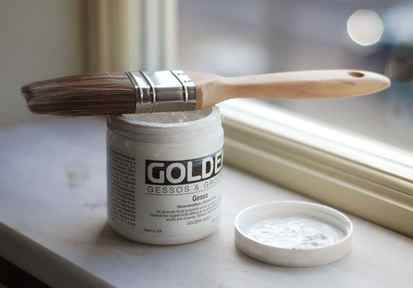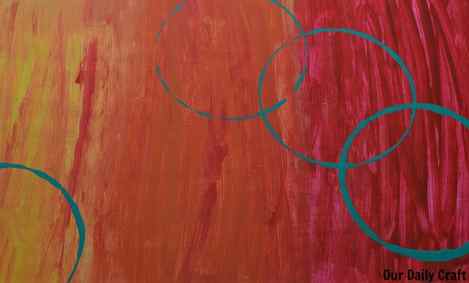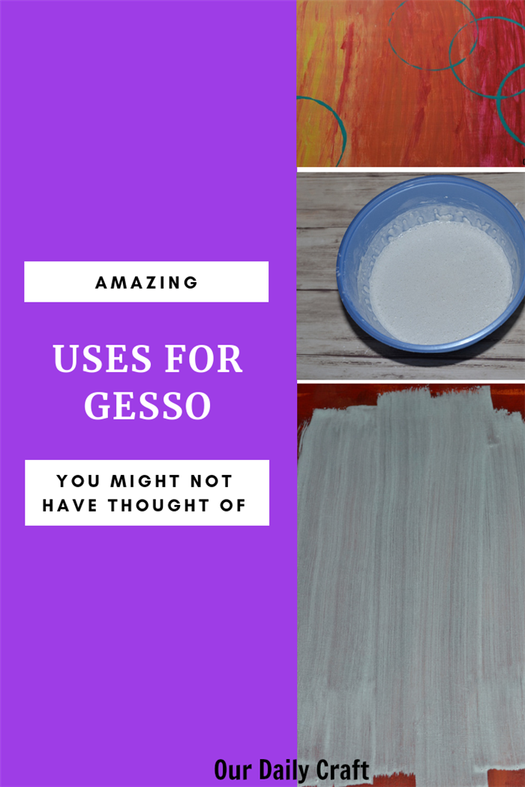Absorbency: Some primers are more absorbent than others. This can affect how the paint adheres to the surface and how it dries.
What the Heck Is Gesso? A Primer on Primers

✓ Showcase your talent and win big in Artists Network prestigious art competitions! Discover competitions in a variety of media and enter for your chance to win cash prizes, publication in leading art magazines, global exposure, and rewards for your hard work. Plus, gain valuable feedback from renowned jurors. Let your passion shine through – enter an art competition today!

Gesso is one of those words that seems to stop beginner artists in their tracks. It leaves many wondering how to use it with acrylics, or if you even need to use it in an acrylic painting at all.
Gesso and Oil Painting
Historically, gesso was made for oil painting and was traditionally used to prepare or prime a surface so oil paint would adhere to it. It is made from a combination of paint pigment, chalk and binder. Gesso would protect the canvas fibers, provide a nice surface to work on and give a little flexibility so the canvas wouldn’t crack if it was rolled. Traditional oil gesso (pronounced ‘jesso‘) could be described as more of a ‘glue gesso’ because it contains:
- Animal glue binder–usually rabbit-skin glue
- Chalk
- White pigment
Here’s an example of a traditional ground for oil painting. Gamblin Oil Painting Ground is not a “gesso,” but prepares a surface that is a balance between the rigidity of acrylic gesso and the flexibility of oil primers. This bright white, non-absorbent ground enhances color vibrancy by retaining oil in the paint.
The oil gesso creates a surface that is absorbent (this comes from the chalk) and has a ‘tooth’ (texture) which allows the paint to grab onto the canvas. So if gesso was originally used with oil painting, what’s acrylic gesso?
Acrylic Gesso
Although traditionally used by oil painters, the gesso often used today is acrylic gesso, which consists of slightly different ingredients. In fact, modern acrylic gesso is a combination of:
- Acrylic polymer medium (binder)
- Calcium carbonate (chalk)
- A pigment (usually Titanium white)
- Chemicals that ensure flexibility and long archival life
Note how acrylic gesso doesn’t contain glue. Acrylic paints are non-corrosive and are stable over time, so you don’t need to worry about paint damaging the canvas—and therefore, you don’t need the glue in the mix. Remember, traditional oil ‘glue’ gesso soaks into the canvas fibers and helps to protect them from the corrosive nature of oils, over time.
What Gesso Is Made From
Gesso is a pretty simple material—it was originally made from a mixture of chalk or plaster and glue. In fact, the word “gesso” stems from the Italian word meaning “chalk.” Today’s gesso is typically a bright white mixture of calcium carbonate and acrylic polymer medium used on canvas, panels, or heavyweight paper, according to Ashley Nordin, education developer at BLICK Art Materials. “The chalk or plaster component of gesso makes it absorbent so that when paint is applied to a surface primed with gesso, the moisture wicks evenly from the paint without any bleeding or seeping of paint binders such as oils into the fibers of the substrate, which can cause a breakdown of the painting in the long term,” she says.
While there are other types of primers out there, including latex, if you’re painting with acrylic or oil, gesso is the best option. “This is because the calcium carbonate mixture and acrylic polymer medium are designed to be compatible with each other and help to better absorb those materials for an ideal color application,” says Nordin. Needless to say, gesso is definitely an artist’s studio essential.
Nordin recommends always priming pre-stretched store-bought canvas with a couple layers of gesso prior to starting a painting, even if it has already been primed. “Practicing this step will help to retighten the surface if there are any minor dents in the canvas, as well as refresh and brighten up your background,” she says.
Different Types of Gesso
You can often find acrylic gesso in three grades—studio, artist, and professional. The difference among these three grades, according to Nordin, is the amount of concentrated gesso in the formula. “The professional-grade gesso is highly concentrated and should be thinned with water for the best application,” she says. “Artist-grade gesso is slightly less concentrated than its professional counterpart, and even less so with the student-grade gesso that is almost ready for use right out of the container.”
Gesso can be sprayed on or applied with a brush onto a substrate such as canvas, panel, or paper, explains Nordin. “It can absorb layers of paint without any bleeding or seeping of the painting medium (i.e., oil stains),” she says. “Gesso allows the surface to accept the paint, so that paint and mediums do not soak into the fibers of the substrate, which can ultimately cause long-term or severe damage to a painting.”
To start, Nordin says to combine acrylic gesso with a small amount of water to help the primer glide along the surface. Next, she says to apply two to three coats with a large brush, brushing each layer in the opposite direction of the previous stroke before allowing layers to dry between applications. Once dry, she recommends lightly sanding using a fine grit sandpaper until the surface is smooth.
Gesso Techniques
Since gesso has a stiff formula, it should be thinned down with water or paint thinner for an ideal, smooth application. “Because of this, gesso acts as a modeling paste when it is applied in heavy amounts to a work surface and allowed to dry,” Nordin says. Its stiff formula can serve as a great way to create textures for abstract painting, notes Nordin, or to build an under layer of texture for a landscape painting. If you go this route and decide to create a sculptural texture with gesso, she recommends using a palette knife for the best results.
While you can certainly buy pre-made gesso or purchase a canvas or panel that has already been pre-gessoed, making the primer from scratch is also an option. “Sometimes you want to use the raw ingredients, not merely to learn how to make a perfect batch, but also to understand how it’s made, and then alter or amend future batches so that they further enhance your art’s uniqueness,” says Kimberly Brooks, contemporary American artist and author of The New Oil Painting: Your Essential Guide to Materials and Safe Practices.
Materials You’ll Need
- PVA Size, such as Gamblin’s PVA Size, Golden GAC 100, or Golden GAC 400
- Chalk dust
- 400-grain sandpaper
Step-by-Step Instructions
- Add one layer of PVA size to your substrate, then let it dry. Brooks says you’ll know it’s completely dry when it’s no longer cold to the touch.
- Next, mix one part PVA size with one part chalk dust (the dust should have a fine, not coarse texture).
- Add the equal parts PVA size and chalk mixture to your substrate and let it dry.
- If you prefer a more opaque base, stop there. For those who like a milkier, thicker texture mix two parts chalk with one part PVA size and add a layer to your substrate. Let it dry.
- Continue adding layers of the two-to-one mixture until you have the desired whiteness and thickness you want.
- When you’re done adding layers, sand the dry gesso with 400-grain sandpaper until smooth.
Using Gesso in Your Art Journal

I once tried making an old book into an art journal by covering the pages with gesso. This wasn’t super successful because I used a glossy board book, but the idea is sound. Adding gesso to paper makes it stronger and keeps paint and ink from soaking through.
By giving the paper a little more texture, gesso gives paint, ink and other things you might add to your pages something to hold onto. It can be used just to add texture and, again, to cover up things you end up not liking or to partially obscure things so you can add another layer to your project.
If you’re planning to use a lot of paint or heavy embellishments on an art journal page, you can also gesso both sides, as this post from Artists Journals Blog suggests.
Gesso as a Paint Lightener
As I was searching online for different uses for gesso, I found this comment from artist Jo Toye that she uses gesso instead of white paint to make a tinted color.
She says she likes the matte finish that gesso gives to paint, and that gesso is less expensive than white acrylic paint (especially if you make your own), making it an economical way to change the color of your paint without having to buy different tints.
More Cool Uses for Gesso
I definitely haven’t tried everything that you can do with gesso, but it is a really cool and versatile material. As soon as I find a stencil I’m going to try this technique from Lynda Heines using gesso to make a textured stencil as the background for a journal page (it could make a cool card, too).
The Stampington blog also has a great collection of ideas for using gesso, including as an alternative to chalk paint and as a whitewash layer over something you’ve already painted. How cool is that?
How do you use gesso in your creative practice? I’d love to hear your ideas!

(Visited 16,417 times, 10 visits today)





